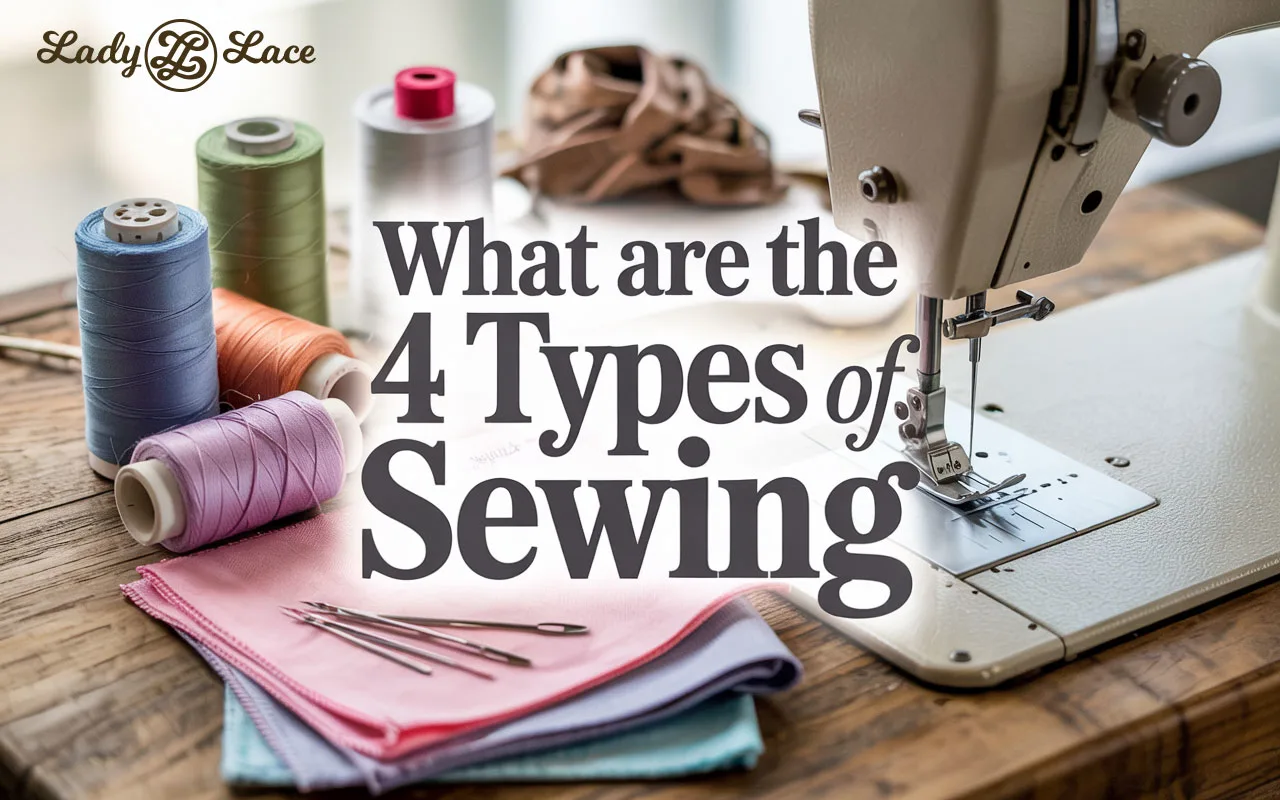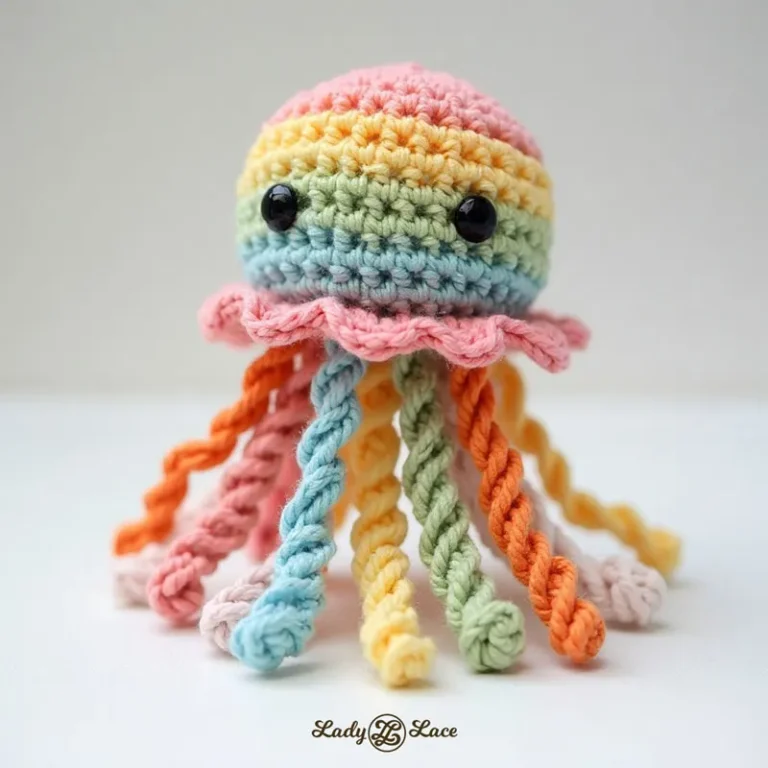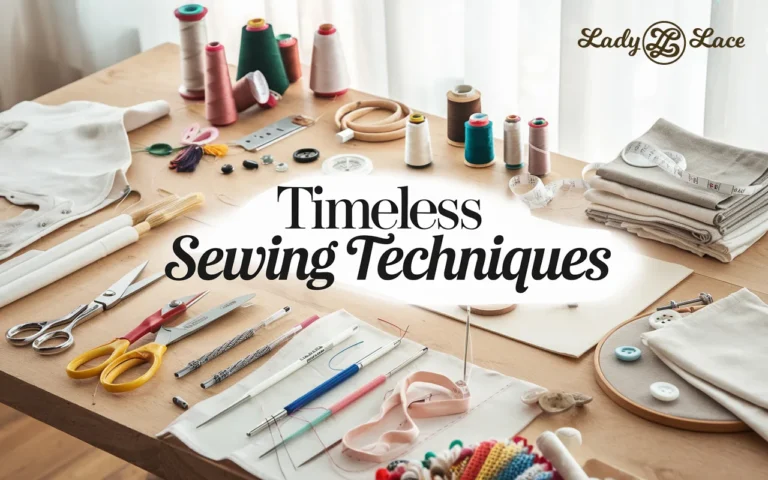Sewing is more than just a practical skill—it’s an art form, a creative outlet, and a timeless craft that connects generations. Whether you’re stitching a cozy quilt, hemming a pair of jeans, or designing a custom dress, understanding the different types of sewing can transform your projects from basic to breathtaking. But what are the four main types of sewing? In this in-depth guide, we’ll unravel the essentials, explore their unique applications, and equip you with the knowledge to elevate your sewing game. Let’s thread the needle and dive in!
Why Knowing the Types of Sewing Matters
Before we explore the four core types of sewing, let’s consider why this matters. Each sewing method serves a distinct purpose, from securing fabric to adding decorative flair. Mastering these techniques opens up a world of possibilities, whether you’re a beginner with a hand-me-down machine or a seasoned seamstress tackling intricate designs. Ready to discover the foundation of every stitch? Here’s what you need to know.
The 4 Main Types of Sewing Explained
Sewing can be broken down into four fundamental categories: plain sewing, fancy sewing, heirloom sewing, and quilting. Each type has its own techniques, tools, and charm. Let’s break them down.
Plain Sewing – The Backbone of Every Project
Plain sewing, often called basic or functional sewing, is the foundation of the craft. It focuses on creating strong, practical seams to join fabric pieces or repair garments. Think of hemming pants, sewing a simple tote bag, or attaching a patch—these are all examples of plain sewing in action.
Techniques in Plain Sewing
- Running Stitch: A simple in-and-out stitch for quick seams or basting.
- Backstitch: A sturdy option for reinforcing seams by overlapping stitches.
- Overcast Stitch: Prevents fraying by finishing raw edges.
Plain sewing is typically done by hand or with a sewing machine, making it accessible for beginners. it’s the most widely used type of sewing due to its versatility and simplicity.

Fancy Sewing – Where Creativity Shines
Fancy sewing takes things up a notch, adding decorative elements to your work. This type of sewing is all about embellishment—think embroidery, appliqué, or intricate topstitching. It’s perfect for personalizing gifts or turning a plain garment into a statement piece.
Popular Fancy Sewing Techniques
- Embroidery: Uses colorful threads to create patterns or designs on fabric.
- Applique: Attaches fabric shapes to a base material for a layered effect.
- Smocking: Gathers fabric into decorative pleats, often seen on children’s clothing.
Fancy sewing requires patience and precision, but the results are worth it. A study found that decorative sewing projects have surged in popularity, with a 25% increase in embroidery kit sales over the past five years.

Heirloom Sewing – Timeless Elegance
Heirloom sewing is a delicate, traditional type of sewing that creates keepsake-quality pieces. Often used for christening gowns, wedding veils, or fine linens, it combines intricate stitches with luxurious fabrics like cotton batiste or silk. This method celebrates craftsmanship and heritage.
Key Features of Heirloom Sewing
- French Hand Sewing: Tiny, precise stitches join lace and fabric by hand.
- Pintucks: Narrow, decorative tucks add texture and sophistication.
- Lace Insertion: Integrates delicate lace into seams for a vintage look.
Heirloom sewing often uses specialty tools like fine needles and heirloom sewing machines. It’s a labor of love, but the result is a piece that can be passed down for generations.

Quilting – The Art of Layered Sewing
Quilting is a beloved type of sewing that combines three layers—top fabric, batting, and backing—into a cozy, textured masterpiece. From patchwork blankets to modern wall hangings, quilting blends function with artistic expression.
Quilting Techniques to Master
- Piecing: Sewing small fabric scraps into a larger design.
- Applique Quilting: Adding decorative shapes to the quilt top.
- Free-Motion Quilting: Stitching freehand patterns with a sewing machine.
Quilting has deep cultural roots, its evolution from utilitarian bedding to a celebrated art form. Whether you’re hand-quilting or using a long-arm machine, this type of sewing offers endless creative potential.

How to Choose the Right Type of Sewing for Your Project
Not sure where to start? Here’s a quick guide:
- Need something functional? Go with plain sewing for durability.
- Want to impress? Try fancy sewing for eye-catching details.
- Crafting a keepsake? Heirloom sewing adds timeless beauty.
- Love texture and warmth? Quilting is your go-to.
Mix and match these types as your skills grow—many projects blend multiple techniques for stunning results!
FAQ: Common Questions About the Types of Sewing
What is the easiest type of sewing for beginners?
Plain sewing is the simplest starting point, requiring only basic stitches and minimal tools. Start with a running stitch or a straight seam on a machine.
Can I combine different types of sewing in one project?
Absolutely! A quilt might use plain sewing for piecing, fancy sewing for appliqué, and quilting to finish the layers.
What tools do I need for heirloom sewing?
You’ll need fine needles, lightweight thread, and delicate fabrics like lawn or batiste. A magnifying glass can help with precision.
Is quilting the same as sewing?
Quilting is a type of sewing that specifically involves layering and stitching fabric with batting. All quilting is sewing, but not all sewing is quilting.
Stitch Your Way to Mastery
From the sturdy seams of plain sewing to the intricate beauty of heirloom techniques, the four types of sewing—plain, fancy, heirloom, and quilting—offer something for everyone. Each method brings its own magic to the table, whether you’re repairing a tear or crafting a family treasure. So, grab your needle and thread, experiment with these styles, and let your creativity soar. Ready to start your next sewing adventure? Share your projects with us in the comments or explore our for more inspiration!













